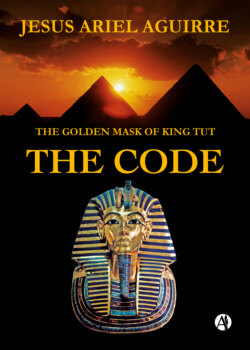Читать книгу The Golden Mask of King Tut The Code - Jesús Ariel Aguirre - Страница 11
На сайте Литреса книга снята с продажи.
Akhenaton
ОглавлениеAnne Lein seeks to know more about Pharaoh Amenhotep IV, so she asks: Why did Akhenaten change his name and why is he known as the Heretic Pharaoh?
Ngerjeperura Amenhotep, Neferjeperura Ajenaton, was the tenth pharaoh of the 18th dynasty. Kingdom from 1353 BC to 1338 BC
The hieroglyphic transcription of his first Throne and birth name is Nefer-Jeperu-Ra Amen-Hotep.
Akhenaten came to the throne with the same monarchical name as his father: Amenhotep (transcribed Amen-Hotep and later Hellenized as Amenophis which in the ancient language means “Amon is satisfied” or “the will of Amun be done”.
He was the son of Amenhotep III and Queen Tiye. He succeeded his father after the premature death of Prince Thutmose, the legitimate successor. It was a time of happiness, the Empire was overflowing with gold in its coffers, the administration was efficient, his father ruled for three decades, and he presented himself as a divine sovereign, triumphant over chaos and the forces of evil. Two 20 meter tall statues of the pharaoh guarded his funerary temple on the banks of the Nile, and so the country had erected monuments to its own divinity. (The Colossi of Memon)
His first wife was Nefertiti, who was very beautiful and possibly had great gifts, because with her the figure of the Great Royal Wife reached parameters never seen before.
I also highlight the figure of Kiya, mentioned as “The beloved wife”, Ajenaton’s secondary wife, who most likely has gained relevance for endowing the king with a male son, Prince Tut-anj-Aton, the future heir and pharaoh Tut- Ankh-Amon because he changed his name in favor of Amon again.
He began to reign during the golden years of the Egyptian Empire, almost 3,500 years ago. Egypt was the richest and most powerful in the world. His army defeated anyone else who faced him, his crops were plentiful and his population well fed, his sumptuous temples and royal palaces were laden with treasures, and everyone was convinced that their success was due to their gods.
Then Akhenaten arrives with revolutionary ideas, it is the first time that a pharaoh in thousands of years proposed to change the pantheon of the Egyptian gods, with only one, the creator of everything: the Sun or Aton, as it was called, life was born from the sunlight, embodied in Aton, what he proposed was heresy.
However, the pharaoh was a living god and could change everything: religion, politics, art and even language.
It was then that he decreed that the 2,000 traditional gods that had protected Egypt since its foundation were eliminated.
The gods in animal and human forms were replaced by an abstract god, the Sun that illuminated the king with its rays. For the traditional priests, who had dedicated their entire lives to the ancient gods and had been extremely powerful until then, were exiled, Akhenaten began to win many powerful enemies.
The next announcement from the royal couple was just as surprising, they left the ancient and holy city of Thebes, the heart of the entire nation, and would head north up the Nile River in search of a new utopia.
